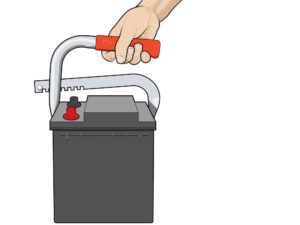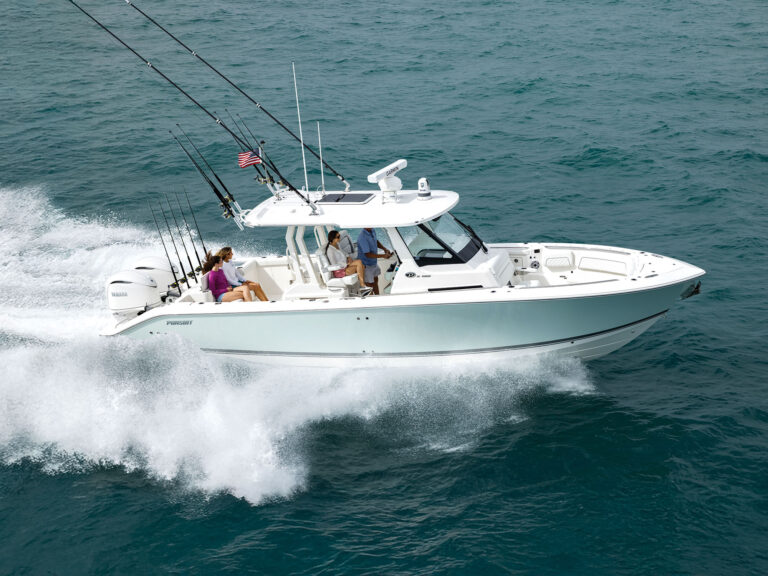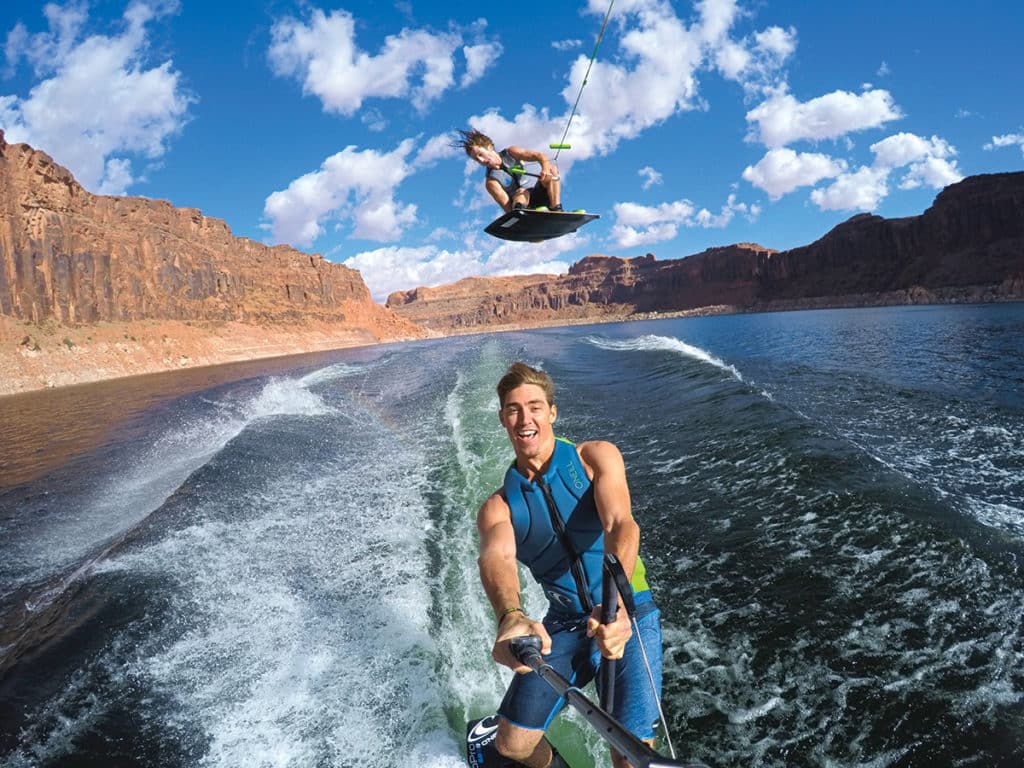
As a boating journalist, my primary job had been to gather information for print articles. But the job description has changed: I’m often asked to shoot photos and video, too. I take pride in what I’ve learned about working with action cameras to get the shot. Still, to push the envelope of my own capabilities, I borrowed five Virb XE cameras from Garmin and incorporated them into my photo sessions. I also solicited tips and tricks from four imaging pros who shoot boats and watersports. Follow their advice and, with just a little effort and persistence, you can use action cameras to add stunning angles to videos and catch spectacular still images on the water.
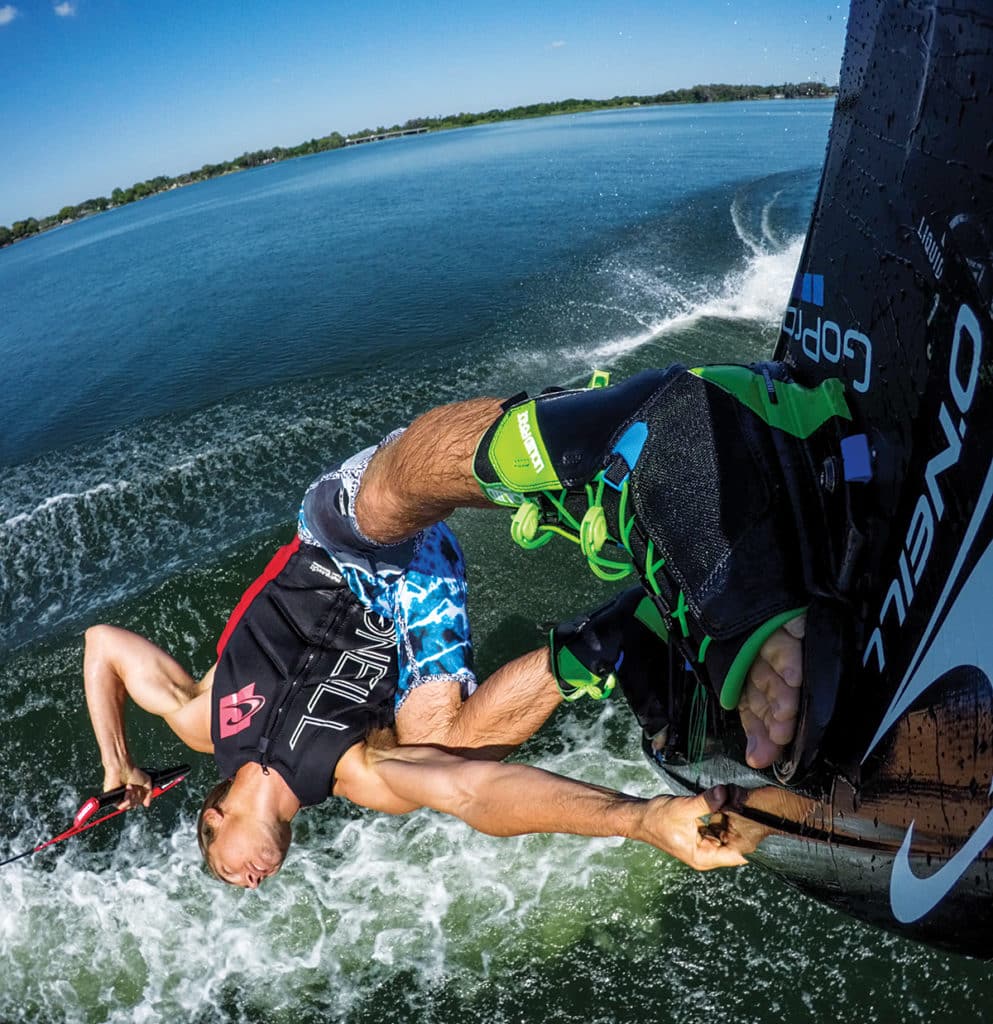
Join the Action
Why use an action camera like a Virb or a GoPro?
“They let you capture your own personal experiences in professional-quality video,” says Collin Harrington, who is a pro wakeboarder as well as a professional photographer and videographer. He believes that the ubiquity of action cameras is a huge advantage. “When I pull out my bigger cameras, people freeze up,” he says. “The GoPro seems less intimidating.
I put it on a floating handle, and it’s like, ‘Oh, look at this toy,’ and they’ll pick it up and goof off for the camera. I’m capturing moments I just couldn’t get with a larger camera.”
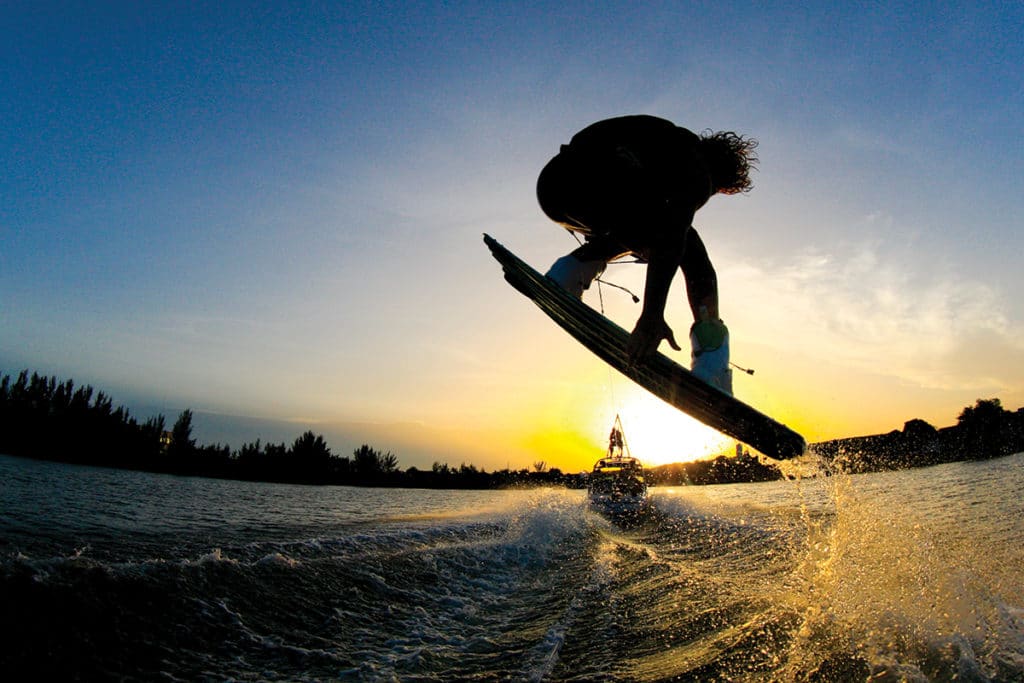
Location, Location, Location
“Action cameras are changing the way we shoot,” says professional photographer Ben Hicks. “Especially in the towing environment, we had limits on what we could do. I’m looking for new angles: something different and unique. Action cameras are so small and light that I can get them in areas I just can’t get a DSLR. When I’m on assignment, I have to shoot with the DSLR.” He often rides on a tube, either in front of or behind a wakeboarder, shooting with his Canon EOS 1DX and a wide lens in a waterproof housing. When he shoots from the boat, telephoto lenses frame riders closer than an action camera is capable of. But Hicks also shoots with four GoPros. “I want to get every angle possible,” he says, which he captures using sticky-back camera mounts, a 2-foot pole with a swivel head, or by mounting a camera on the tow rope 5 to 10 feet ahead of the rider. The key is checking and adjusting camera positions on the fly, he says. “The ability to immediately preview what you just shot, without removing the card or connecting to a smartphone — that’s a huge advantage of the newest cameras.”
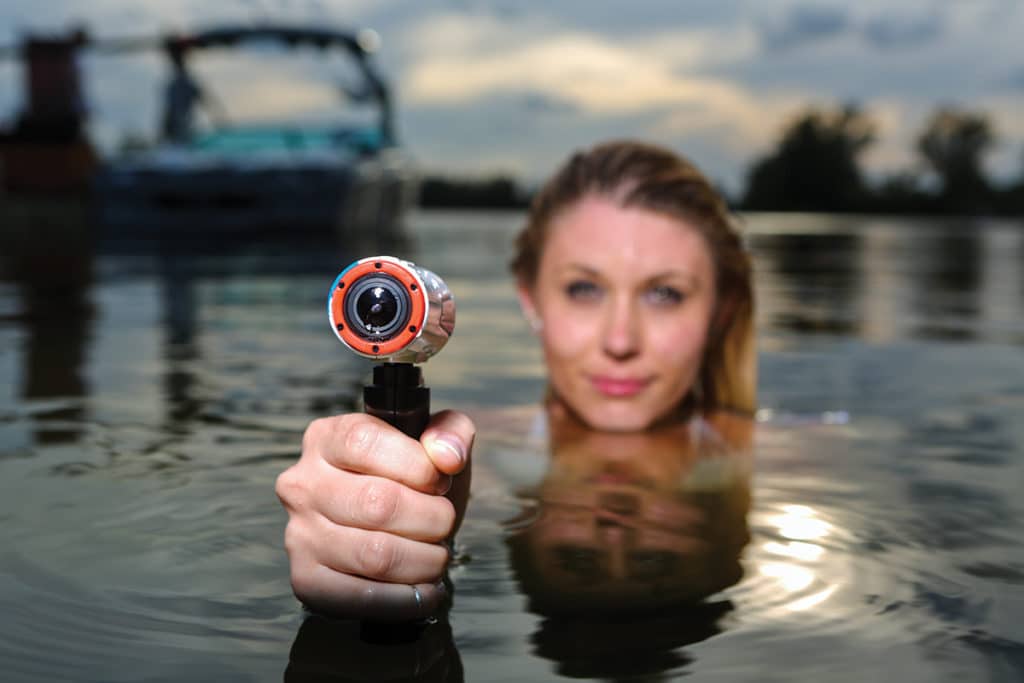
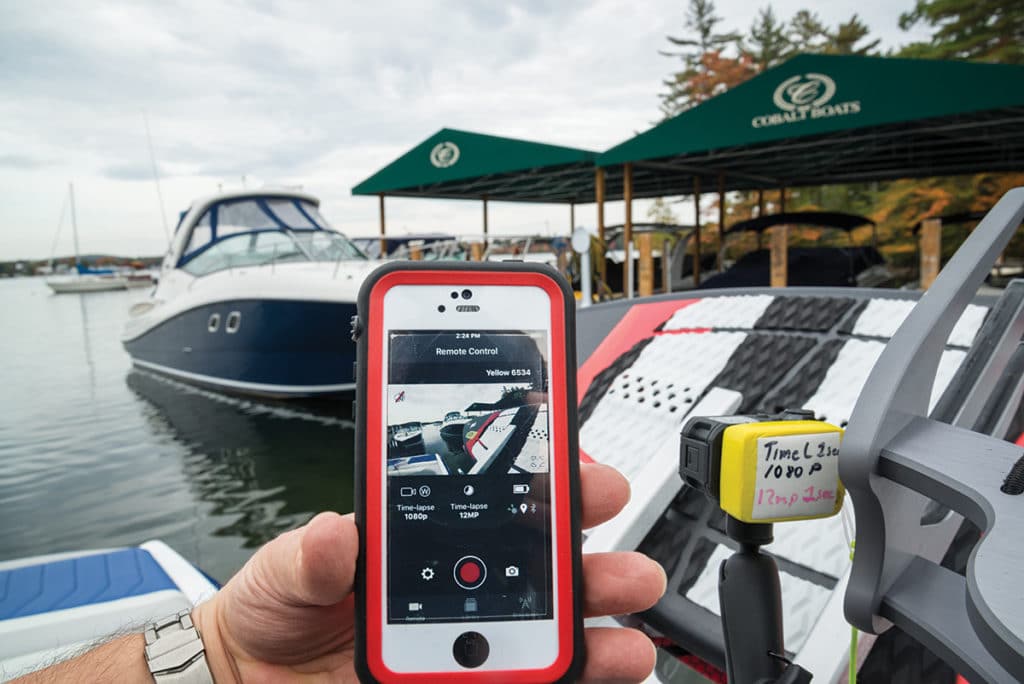
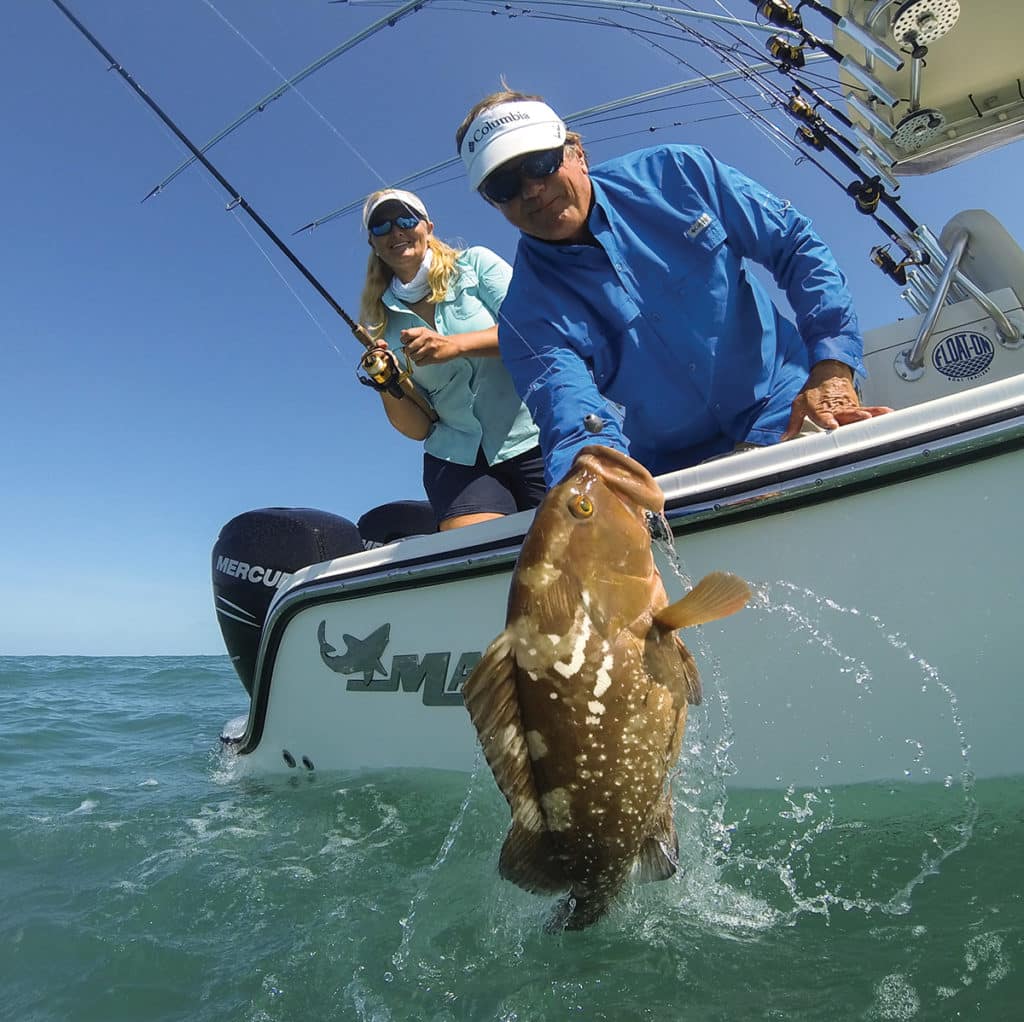
Harrington, who often captures images specifically for GoPro, pushes action-camera shooting further. “We do a lot of ride-alongs, where we pass the camera back and forth,” he says. “Make one tow rope about 5 feet longer, and use an extendable pole — the longer, the better — so you keep a safe distance.” Harrington adapted a 12-foot telescoping boathook. “When you shoot from behind, you get more water on the lens, but the boat is in the shot,” he says. “Shooting from in front, you have to worry about the rope going over your head, but the lens stays dryer.” A safer way to shoot tandem is for the riding photographer to stay well off to one side, giving the other rider the full wake’s width for tricks. It’s also worth trying this angle for unique skiing and wakesurfing shots.
“When I wear a helmet camera, I point it downward until I see just a little of my face in the bottom of the frame,” Harrington says, since this captures the whole rider and board in most tricks. He also mounts cameras on the extreme ends of boards, angled to get as much of the rider as possible. “The extendable pole is the key for wakesurfing,” he says. “Twelve feet is perfect. I shoot a lot from above, in front of, from the side, and behind the rider.” He also mounts a camera at the stern, pointing aft, on whichever side the rider is surfing. “Experiment,” he says. “That’s the beauty of small mountable cameras. The locations you don’t expect to work turn out to be the best shots.”
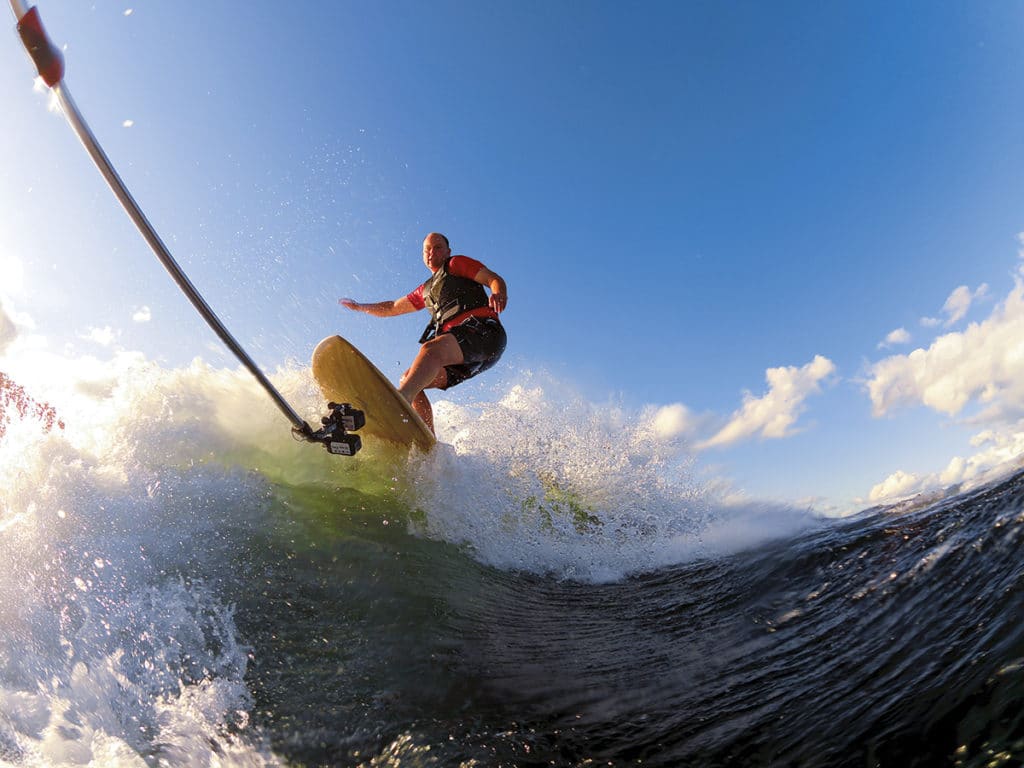
Shooting with Ultrawide Camera Views
“You have to get really close to the subject for it to stand out,” Hicks says. “If you’re not close, a rider will look like an ant in the photo.” That proximity can be tricky, though. “Think about how that image is going to distort. With the camera close to the rider’s head, his face might look big; or down by his foot, his boot will look huge.” Use that distortion advantageously, Hicks says, by getting the rider large in the frame, but with storytelling details in the background. “You’ll see the boat, the whole wake, the surroundings — you’re getting a lot more information into that photograph.”
“GoPro’s wide field of view makes composition less critical,” says Sport Fishing magazine editor-in-chief Doug Olander. “Just guesstimate, being mindful to keep the camera horizontal, and move it around. You want to put the camera really close to your subject, often within 2 feet. Everything in the background and to the sides will also be in the shot.”
“Wide shots work well close to the subject,” Harrington says, “but you’ll also get some cool shots farther away. Just try to tell a story. Even in a 30-second video, you need an intro, then action, then a closer. If you have a glassy day on the lake, get a nice clear shot early, before the boat wakes start. Or get a wide shot coming out of the canal onto the lake.” Break up the action, too. “I shoot from a jaw clamp on the mirror, pointed back and across the boat to get the driver and everything else in the boat, or up on the tower shooting down at everybody,” Harrington says. “People forget the camera is there, and you get them in a natural state. Don’t forget details: the steering wheel, putting a binding on, the way the sun catches water droplets. It’s easy to overlook them, but they help tell the story.”
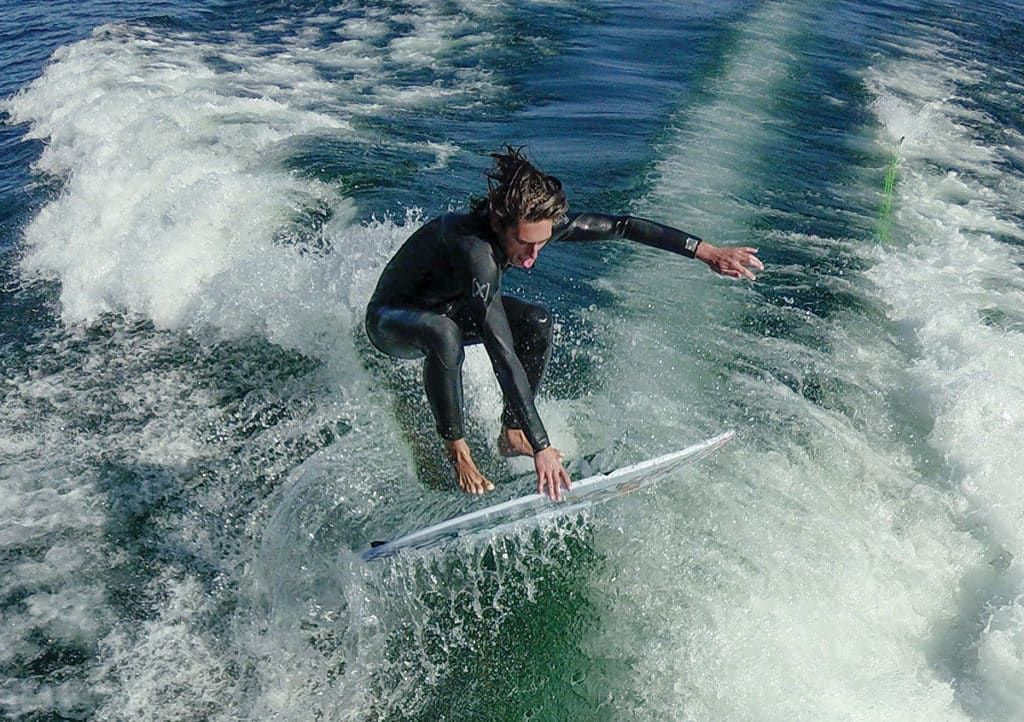
Nuts and Bolts
“When it’s bright daylight, in perfect blue skies, that’s when action cameras do well,” Hicks says. As light diminishes, image quality suffers. Challenging light also throws exposure meters awry. “Point a GoPro into the sun for a silhouette, and it has a tough time metering [the light],” he says. “I’m constantly looking at where the light is coming from in relation to the camera.” Coordinate with the boat driver so the sun stays behind the camera, preferably a little bit to one side, with no shadows from the boat showing in the shot.
Hicks tends to leave his action cameras on full auto exposure while concentrating on DSLR shots. Harrington gives his cameras an edge when needed. “If I know I’m shooting into bright light, I’ll put the [exposure value] down a little,” he says. “I also set the limit to 400 ISO. Even in low light, I won’t go past 800 ISO unless I absolutely have to. I shoot everything I can at 4k unless I need slo-mo, which is really nice for close-up ride-along stuff. Then I’ll shoot 1080 HD at 60 or 120 frames per second.” That allows half- to quarter-speed playback once edited into normal 30 fps video output. “720 HD at 240 fps works well for social media and the Web.”
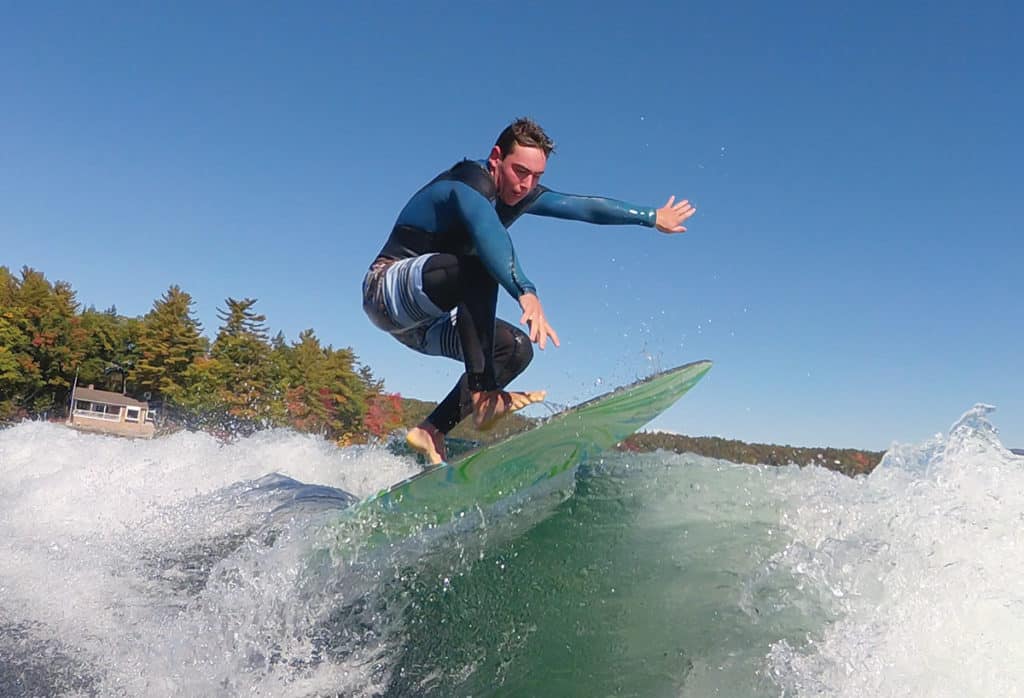
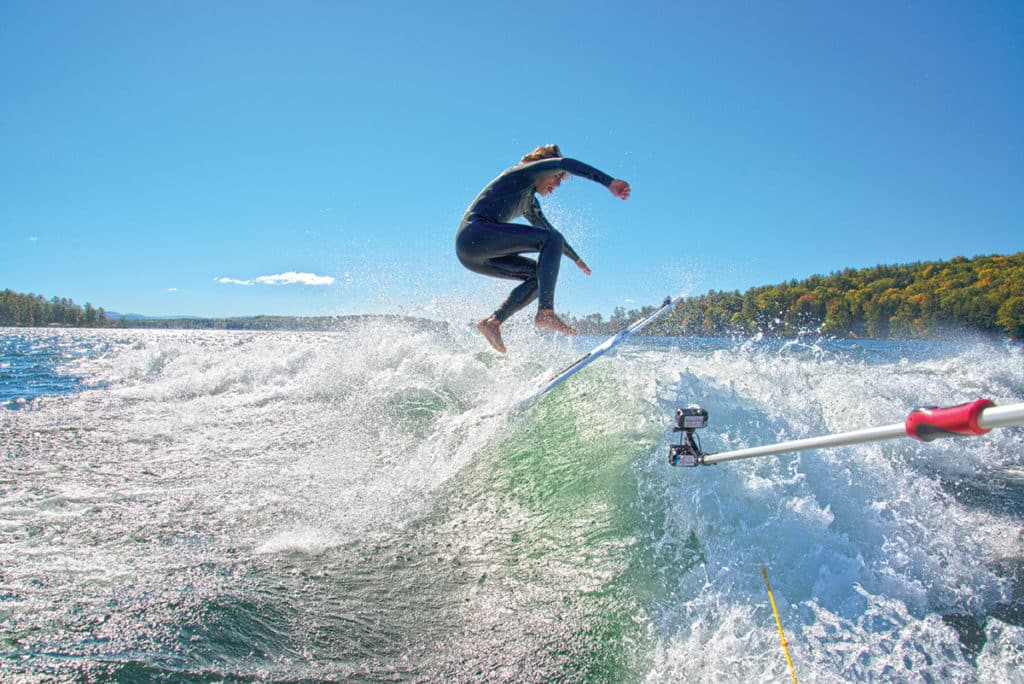
For quick social media posts, professional bass fisherman Fred Roumbanis says, “I leave my camera on all day, but after I catch a fish, I flip it off and back on,” which starts a new video file. “Later, I can get right to the action.” A 32-gigabyte memory card lasts throughout most days, although shooting a lot of 4k video benefits from larger 64-gig cards.
“The single biggest key is to constantly clean your lenses,” Harrington says. “One drop of water in the wrong place ruins a lot of shots.” He says fresh water, GoSpot or even spit helps slightly. Garmin coats Virb XE lenses to repel water and fingerprints, but I still found I cleaned lenses as often as a few times per minute with 4-inch squares cut from an Absorber artificial chamois.
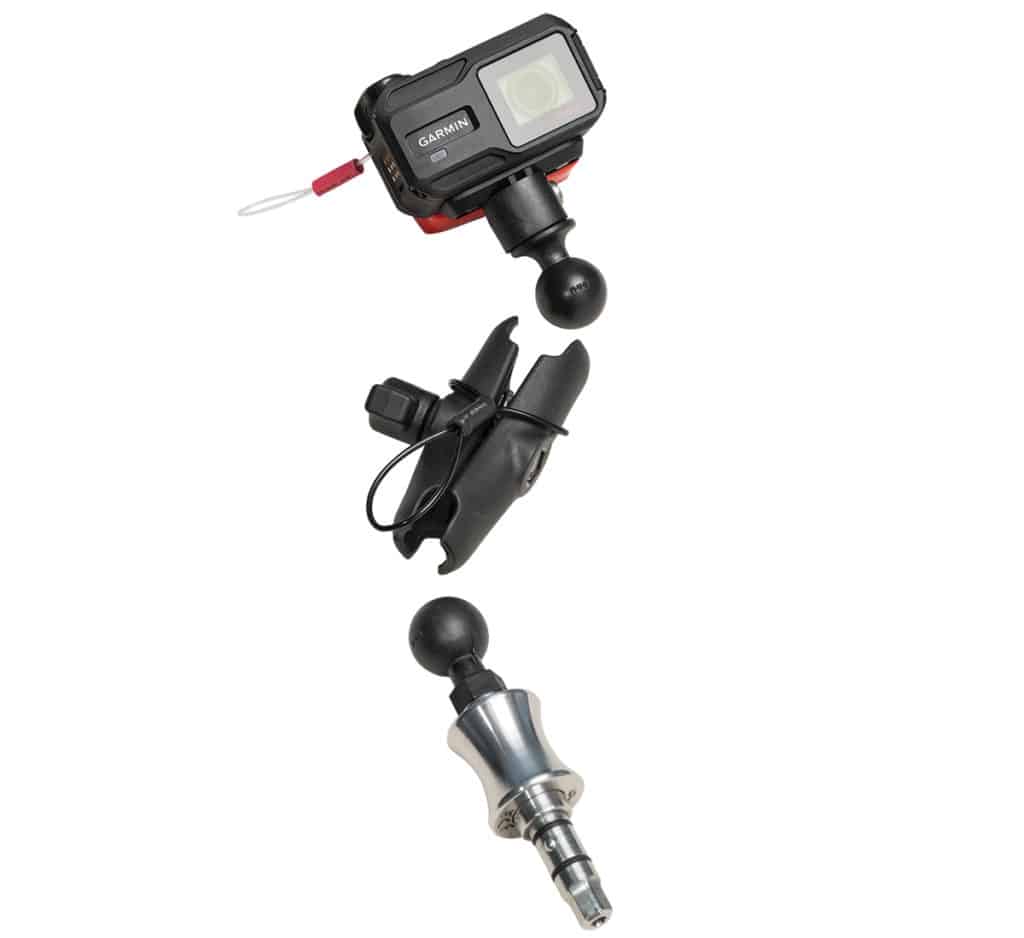
Garmin chose a GoPro-compatible mounting system for a reason: There are thousands of third-party accessories for that particular mount. I also use RAM mounts, based on 1-inch balls and connecting arms, to enhance mounting flexibility. Additionally, I rigged my Virbs with flotation pillows as well as 400-pound monofilament lanyards and 200-pound Dacron tethers, which can be made at offshore tackle shops. Five cameras are color-coded with heat-shrink tubing, and I note both video and photo settings on shrink-wrap tape with permanent marker, which is erased with alcohol swabs.
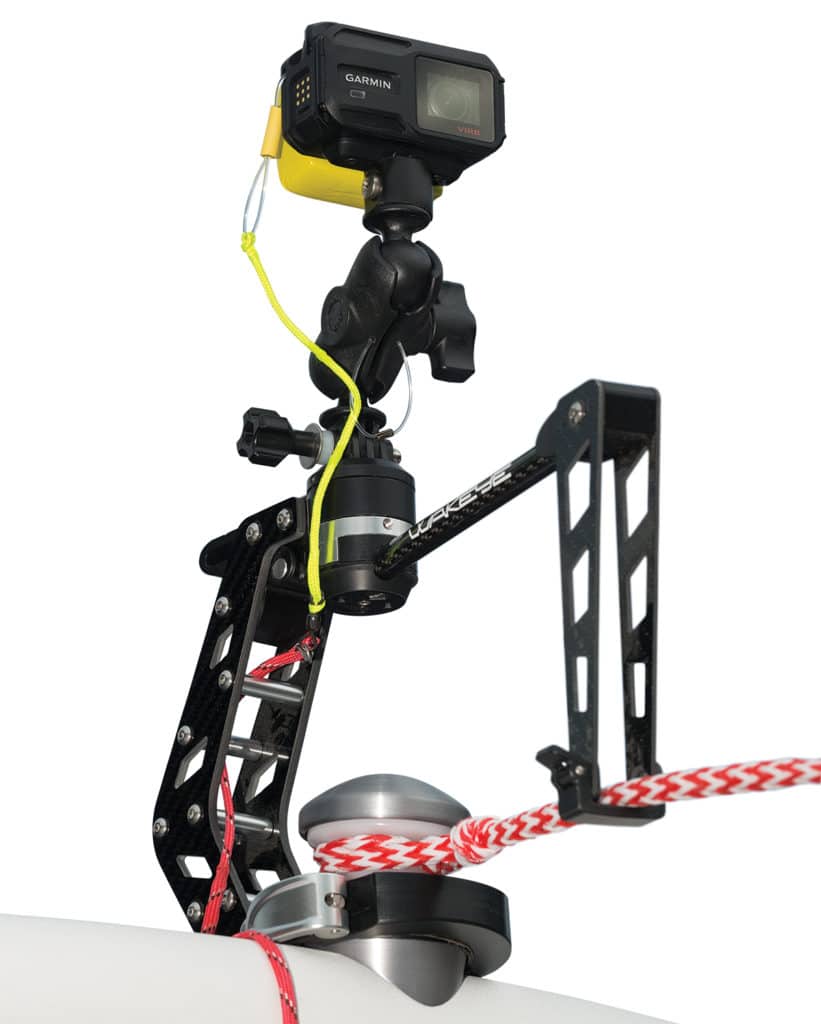
Act Now!
Each new generation of action cameras extends capabilities with higher frame rates for super-slow-motion HD video, ultra HD video, and better low-light performance. “We went from film to digital, and now to tiny little cameras that we can put anywhere, even in midair,” Hicks says. “Who knows in the next 15 years what we’ll be able to do.” Still, he says the biggest advantage in using action cameras on boats already exists. “Size and weight, that’s what changed the game,” he says. “That tiny little camera gives you so many options.”
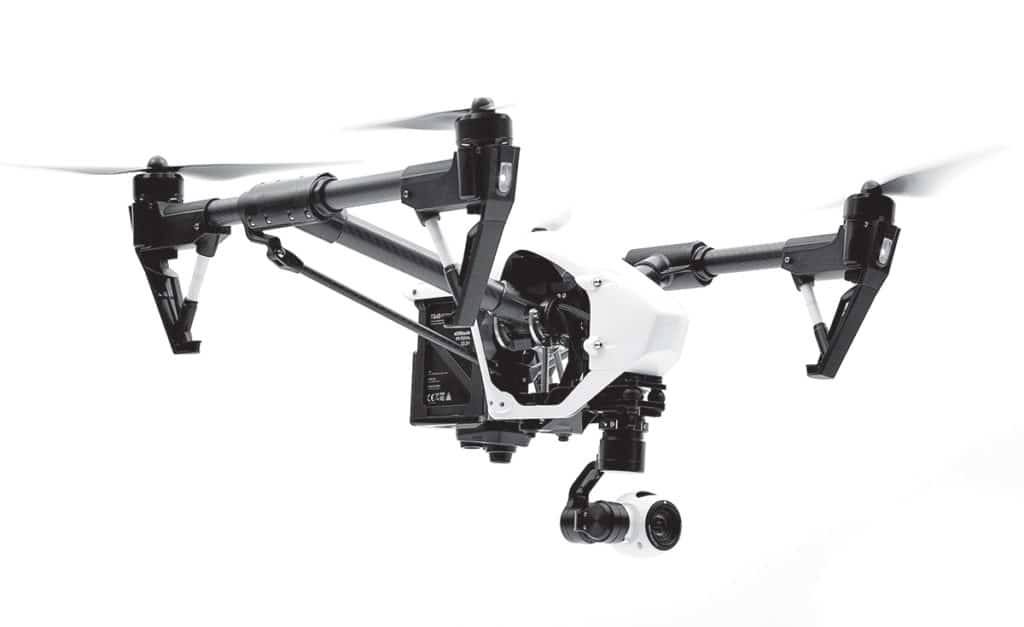
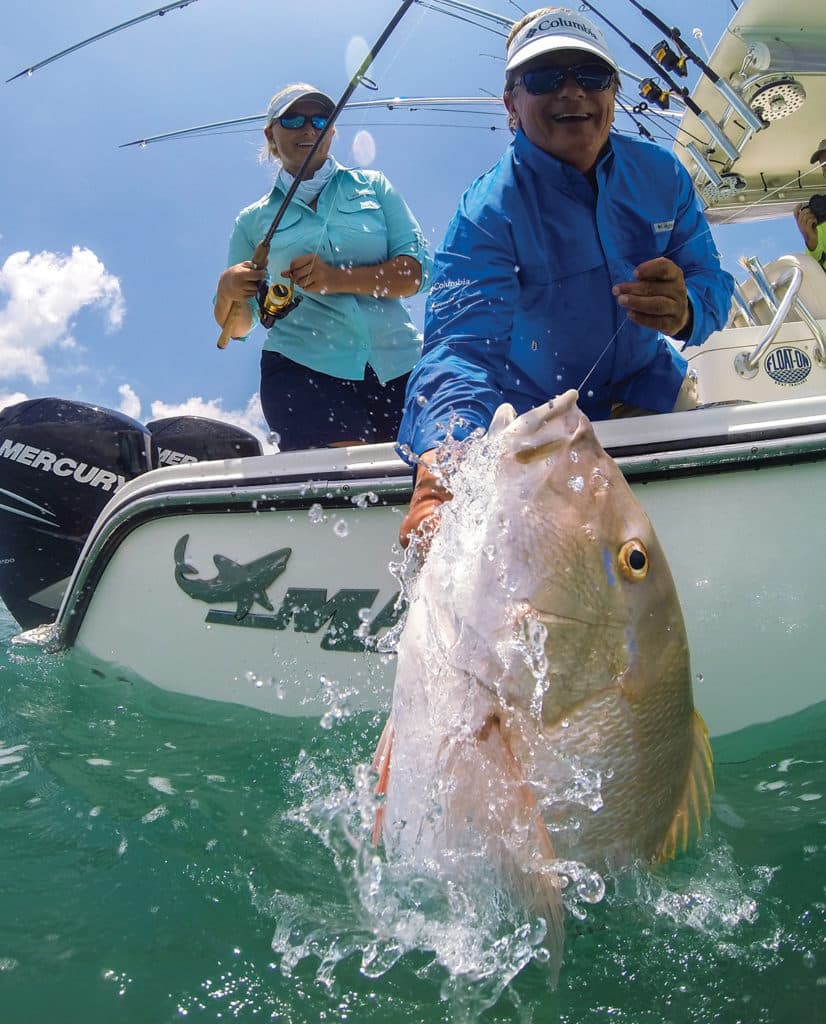
Fishing
“When the angler is landing or holding fish, extend the GoPro out on a stalk well outside the boat, looking in, and let it snap away,” says Sport Fishing magazine editor-in-chief Doug Olander. “The resulting images look like someone in another boat took the photo. The trick is to get the fish between the camera and the angler.”
Outrigger mounts work great on large boats, mounted low with the camera pointing back toward the cockpit. Be sure it’s level to the horizon. On center consoles, better images come from the forward and aft edges of the hardtop, with the camera just high enough to shoot over everyone’s head. To catch the release alongside, I cobbled together rod-holder mounts from swimming pool drain “freeze plugs,” or I use a camera on a telescoping stick that gets much closer than I can with a DSLR.
For underwater shots, consider using a GoPro encased in waterproof housing and an extended camera pole. West Coast editor Jim Hendricks uses a 6½-foot camera pole or attaches it to the handle of his deck brush.
It’s hard to get compelling shots while also fishing. “I have my Virb XE tied into my Garmin display on the bow,” says professional bass fisherman Fred Roumbanis. “While I’m fighting a fish, I can glance down to see that everything is in frame, the camera isn’t shooting right into the sun, and there are no spots on the lens.” He affixes one Virb to his windshield for a wide shot. A second Virb is handheld by whoever isn’t hooked up. “For the fish-release shot, I love right at the waterline, half above and half below the water.”




